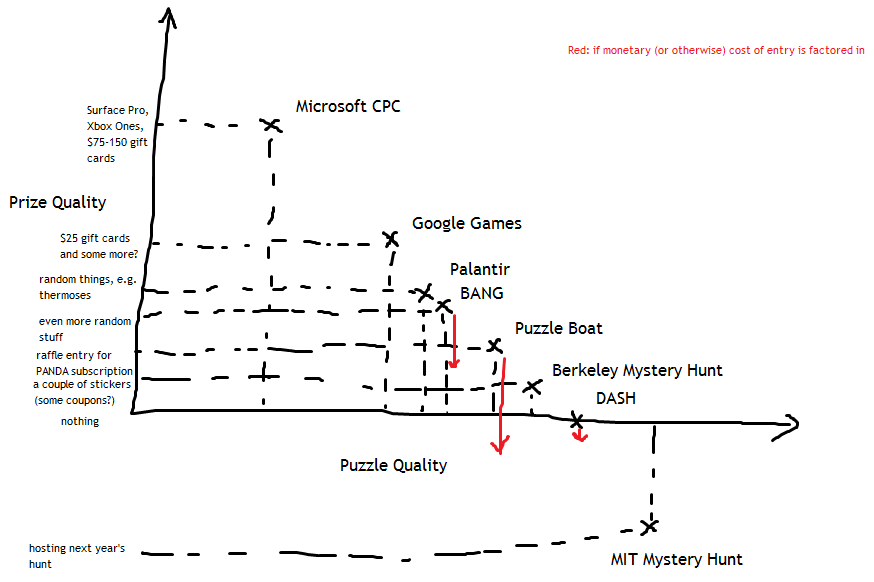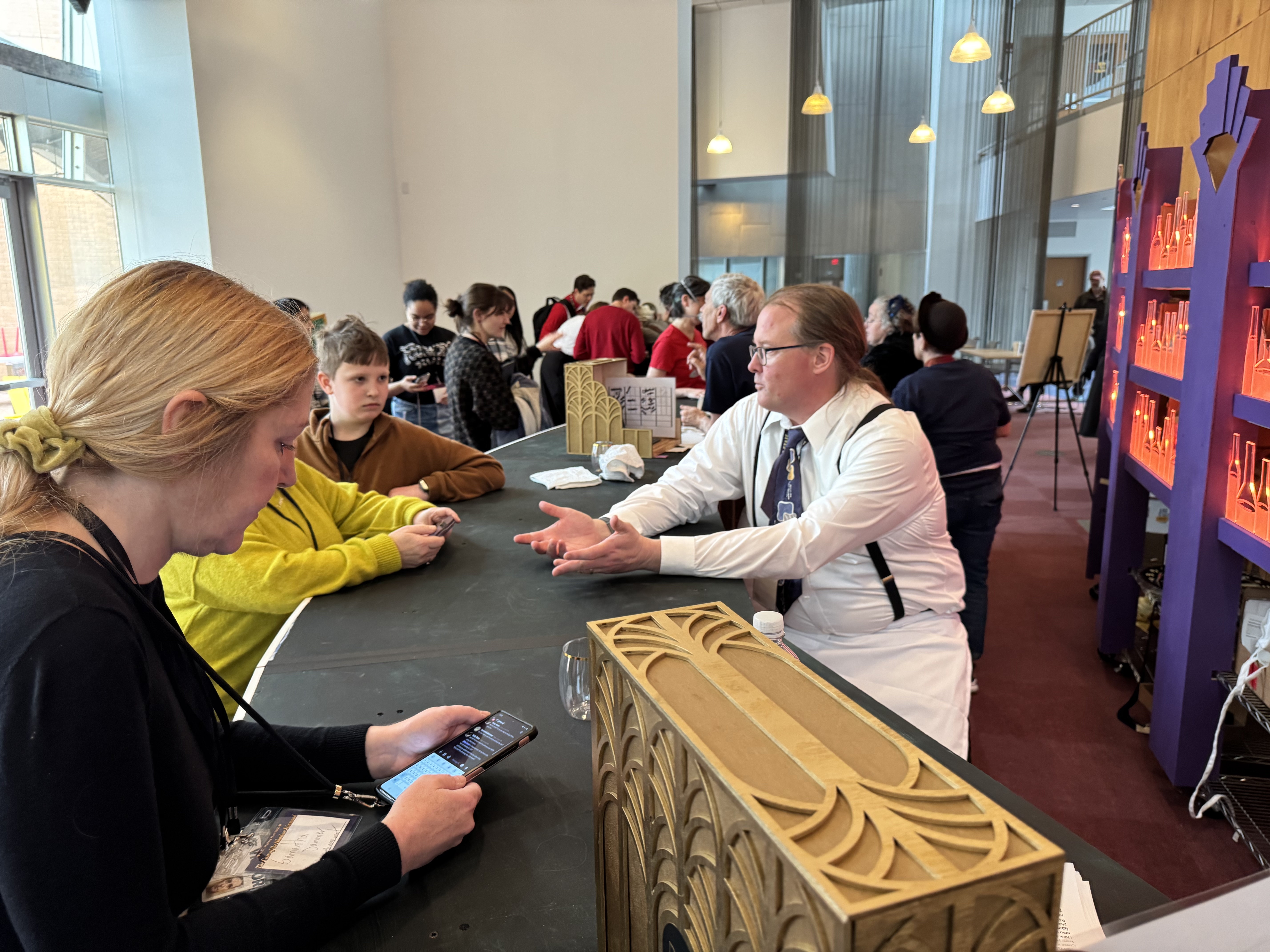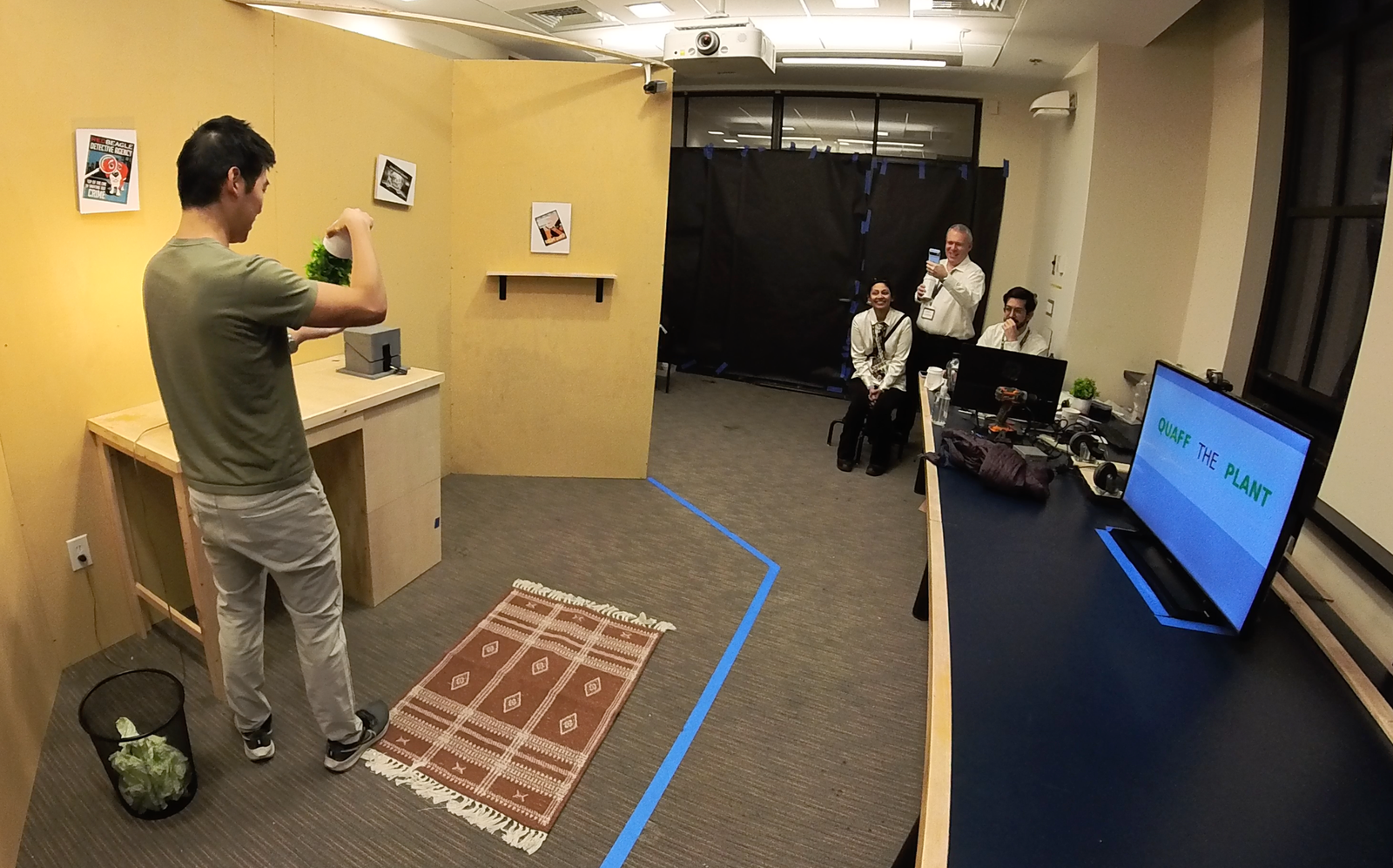Defense of the In-Person MIT Mystery Hunt
The 2025 MIT Mystery Hunt happened about two weeks ago. In case you’re not a puzzler, the MIT Mystery Hunt is an annual, weekend-long, puzzle hunt that runs every January (at MIT, obviously). Puzzles can be anything from crosswords to cryptograms to programming challenges to, well, anything really. In its modern form, the Hunt tends to consist of 125-175 separate puzzles, and ends by directing the winning team to a MacGuffin (a “coin”) hidden somewhere on campus. In addition to the coin, winning teams also win possibly the worst prize in existence: the obligation to write the next year’s Mystery Hunt — your “reward” is to do tens of thousands of hours of work.

So anyway, my team — Death & Mayhem — won in 2024, which meant we worked with the MIT Puzzle Club to write the Hunt that just finished. We spent an entire year planning a 60 hour long puzzle extravaganza with (by our official count) 171 separate puzzles. And now that it’s over, I want to take an opportunity to explain one specific choice we made and to maybe argue that it might be a necessary choice to protect the future of the MIT Mystery Hunt. I don’t know that I’m going to convince anyone new that we made the right choice, but maybe I can at least explain why we made it.
(Oh, and watch this space for more Mystery Hunt content, including what I know everyone is actually waiting for: the radios.)
Before we get into things, I do want to say this: this is just my perspective. While we’ve talked a lot about this internally and my viewpoints are informed by my teammates', I speak for myself and not for Death & Mayhem as a whole.
One of the values that our team agreed on when we first started writing was that our Hunt would be best experienced in person. And we tried really hard to infuse that throughout the weekend, with an in-person, immersive “Gala” for socializing and hinting, and many puzzles that either had physical components or required you to be on MIT’s campus to find crucial information. This wasn’t limited to physical proximity either; we also included references to information that may not be known outside of the MIT community (for instance, the correct orientation to wear a Brass Rat, the MIT class ring).

The Gala bar, whose talented bartenders served up puzzles instead of drinks all weekend
Starting during the pandemic, the MIT Mystery Hunt has seen a surge in participation, from roughly 100 teams before 2021 to over 225 teams this year. Almost all of this increase has been in teams that never set foot on MIT’s campus. In 2021 and 2022 when Hunt ran entirely remotely, this put these teams on equal footing, and since Hunt has returned to campus, these teams have stuck around. While MITMH has always been regarded as a (the?) premiere annual puzzle hunt, the global accessibility afforded by the pandemic has really cemented that position.
At the same time, this has remained (as far as I know) the only very-large-scale, in-person puzzle hunt that has survived the pandemic. While events like The Game happened somewhat regularly in 2019 and earlier, there haven’t been any in the last 5 years. I couldn’t find any other 24+ hour, in-person experience in a similar category to Mystery Hunt.
So Mystery Hunt has become both the premiere, globally-accessible, annual puzzle hunt and also the last remaining large-scale, in-person puzzle hunt. Hopefully it’s obvious that there is at least tension there, but I want to make a case that, given the realities we live in, these two things are actually in conflict. Let’s talk about what it takes to run a large-scale, in-person event, or at least this large-scale, in-person event.
Part of why Mystery Hunt is the only remaining in-person puzzle event of it’s kind is because putting on in-person events is expensive. It’s hard to get an exact estimate, but as best as I can tell, if we had to rent out space for Mystery Hunt instead of hosting it at MIT, it would cost hundreds of thousands of dollars just for the space, and that’s before you get to staffing, insurance, security, furniture rentals, or anything else required to run what would effectively be the world’s strangest 3 day conference. The MIT Mystery Hunt can only exist as an in-person puzzle hunt because MIT makes what is effectively an in-kind donation by allowing Puzzle Club to take advantage of space on campus. (We believe that we spent no more than $4,000 on space-related costs this year, plus another $10,000 to MIT Facilities to cover excess cleaning costs). Depending on how you count, we were allowed to use nearly 100 classrooms, lounges, and other spaces at MIT with a total stated capacity of nearly 2,500 people and we paid virtually nothing for this privilege.
But of course, MIT does not allow Mystery Hunt to do this out of the kindness of its bureaucratic heart. The MIT Mystery Hunt is an event that is put on by the MIT Puzzle Club in partnership with the winning team, and it’s only because we are working with a student group putting on an event for students (that happens to also be open to alums, community members, and the general public) that we are able to take advantage of MIT’s resources.
Many people seem to think that statement is lip service, paid to the administration so that the writing team can get on with their task of writing a Hunt for all comers. I’m here to tell you from this side of the writing table that it is not. MIT administrators aren’t dumb! Without a credible claim of student involvement and student participation, Puzzle Club would not have the cooperation of the MIT administration in putting on Mystery Hunt, and without their cooperation, there could be no in-person Mystery Hunt.
That was why we chose to focus so hard on an in-person experience, layered with MIT-specific knowledge and references. We wanted to build an event that MIT students saw as being built for them. This year, our stats tell us that only about 3% of current students participated in the Mystery Hunt. By privileging the experience of students (both as people on-campus and people with MIT-specific knowledge), hopefully they see that Mystery Hunt is for them and not just for outsiders, and they’ll bring their friends next year. Growing that number maintains credibility for Puzzle Club and future writing teams to keep the event going. This feedback from one student is exactly why we took this approach:
As a current MIT undergrad, Mystery Hunt can sometimes feel a little surreal because there are so many strangers wandering around the place that is kind of like my home. MIT-specific nods and references make me feel like I do actually have some kind of home-field advantage, and even though there’s a lot of alums on our team, knowing things like the fastest way from A to B or some random piece of campus trivia gives me an opportunity to really contribute to solving the hunt.
It’s definitely challenging that MITMH has fallen into this dual role, and if it shifts (as I think it should) back to an in-person focus and away from accessibility for fully-remote teams, maybe there is a loss of a singular “premiere, globally-accessible, large-scale puzzle hunt.” However, the online puzzle hunting community has truly been blessed in the last few years with a surfeit of amazing, high-quality, online puzzle hunts. Just off the top of my head, the Galactic Puzzle Hunt, ECPH, Grand Hunt, VehemHunt (which, from the sounds of it, is planning a sequel), Cryptex Hunt, Huntinality (though maybe not this year), and likely more I’m not even aware of offer a packed calendar of year-round internet-accessible puzzling. That’s way better than can be said for in-person hunts in the year 2025.
I’m not going to claim we struck the perfect balance, or that there aren’t ways to improve it. (If nothing else, I’m fascinated to hear how the Brown Puzzle Hunt’s split experience goes, although I’m not sure I could sign up for two weekends of running Mystery Hunt). And I suspect there are people — maybe even people reading this — who would not feel the loss if in-person puzzle hunts disappeared; maybe I can’t convince you. But in my view, as with anything rooted in joy and love and craft, the world would be a sadder, darker, and less magical place if in-person puzzle hunts faded completely from existence. Where else can you shake up someone’s “martini” only to reveal that it’s full of Scrabble tiles, or make one person try and interpret directions from their team that come entirely in the form of “QUAFF the PLANT”, or give them a puzzle that’s a 40 meter long piece of ribbon?

I don’t think that’s how you “quaff” (From video taken by Steve Ewing of Stand Inside Media)
Not everything needs to be like this. But something should be. I think the MIT Mystery Hunt is our best chance to save the magic of what is possible in-person, and we can only do that if it is an event that speaks to its hosting community. That’s why we wrote our Hunt the way we did, and I hope that future writers will at least consider that as they produce their Mystery Hunt.